Abstract
The need for new investigations on the effect of insecticides on the behaviour of mosquitos was recently stressed by the WHO Expert Committee on Insecticides, which recommended a provisional method for the determination of the irritability of mosquitos to insecticides for trials in the field and the laboratory. One such trial, carried out in Uganda under what can be termed typical field conditions, is reported in the present paper.
Two strains of Anopheles gambiae, one of Anopheles funestus, one of Anopheles pharoensis and one of Aëdes aegypti were tested for their irritability to DDT. Anopheles gambiae proved by far the most irritable of the species examined but in all the trials, the authors point out, there was a great individual variation even when the tests were carried out at the same time of the day and with mosquitos of the same age and condition of feeding. Flights in the control mosquitos were also noticeable and the provisional method was not considered entirely satisfactory for use in the field.
Full text
PDF
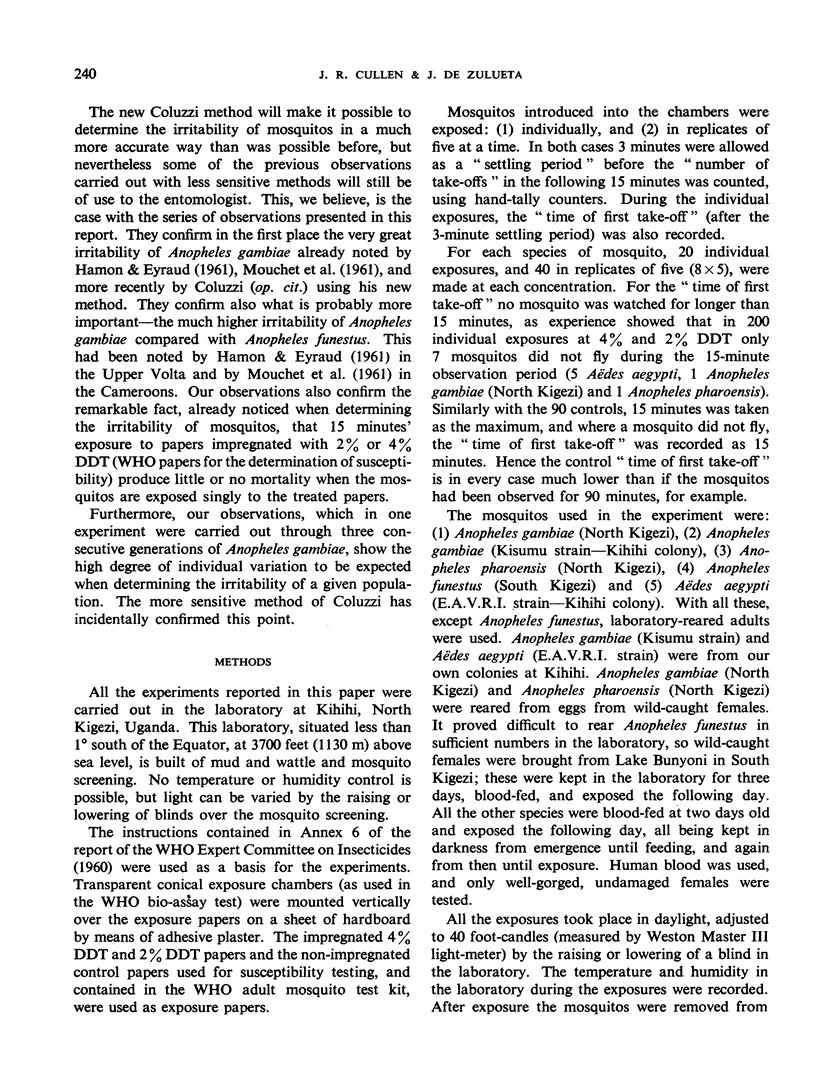
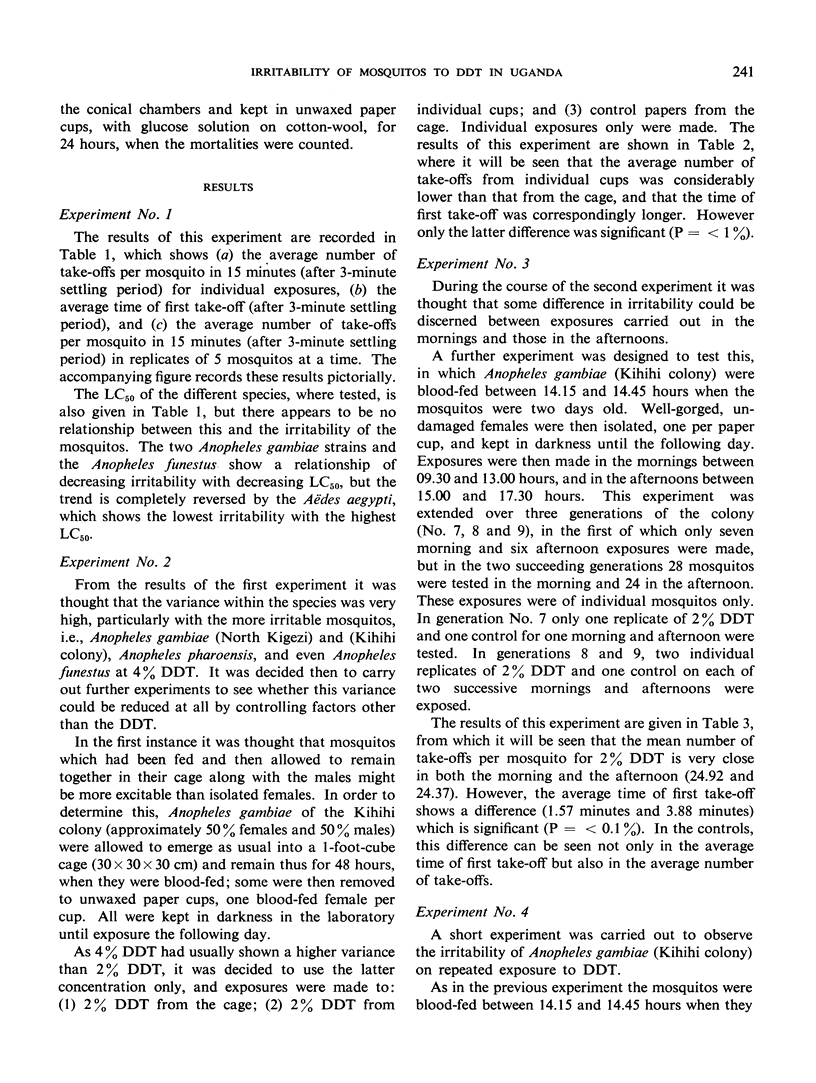
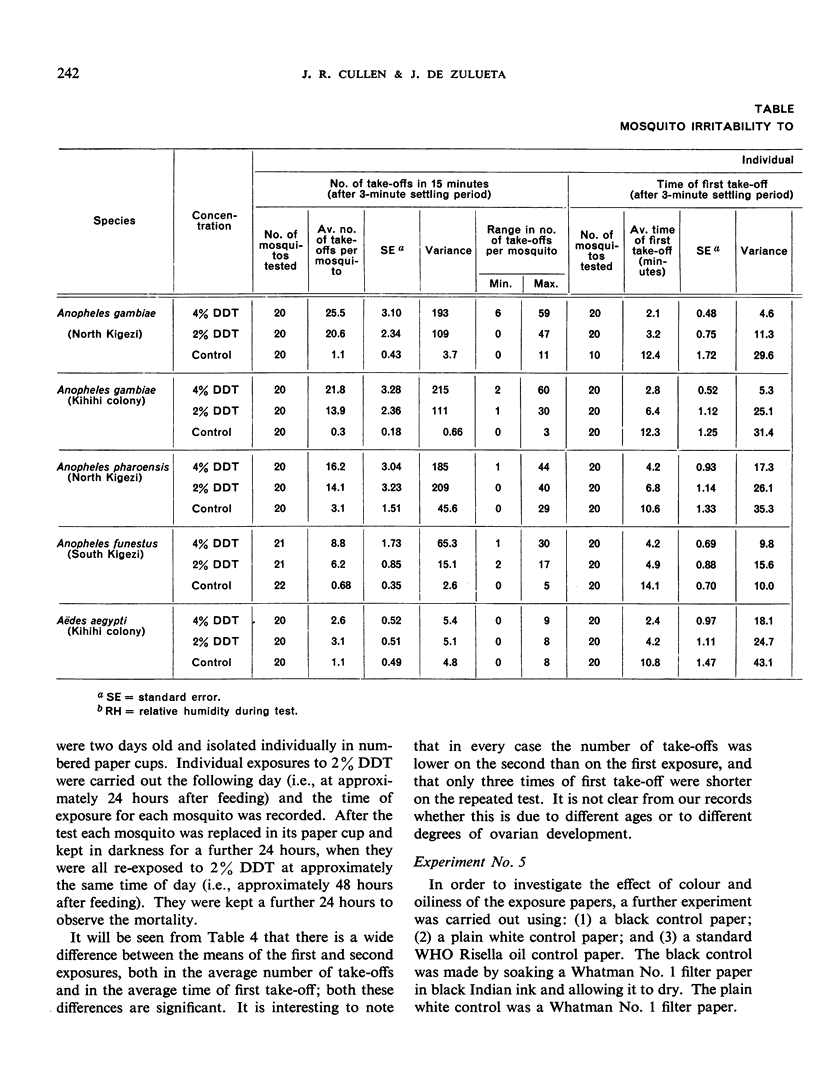
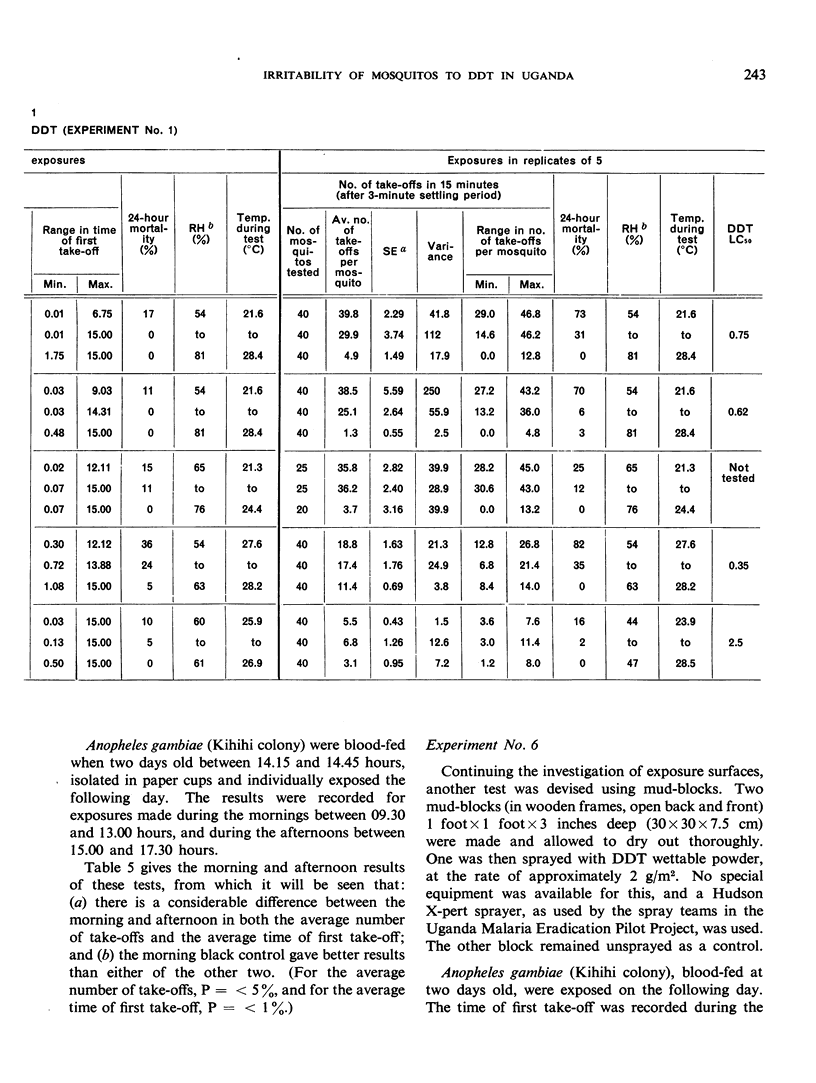

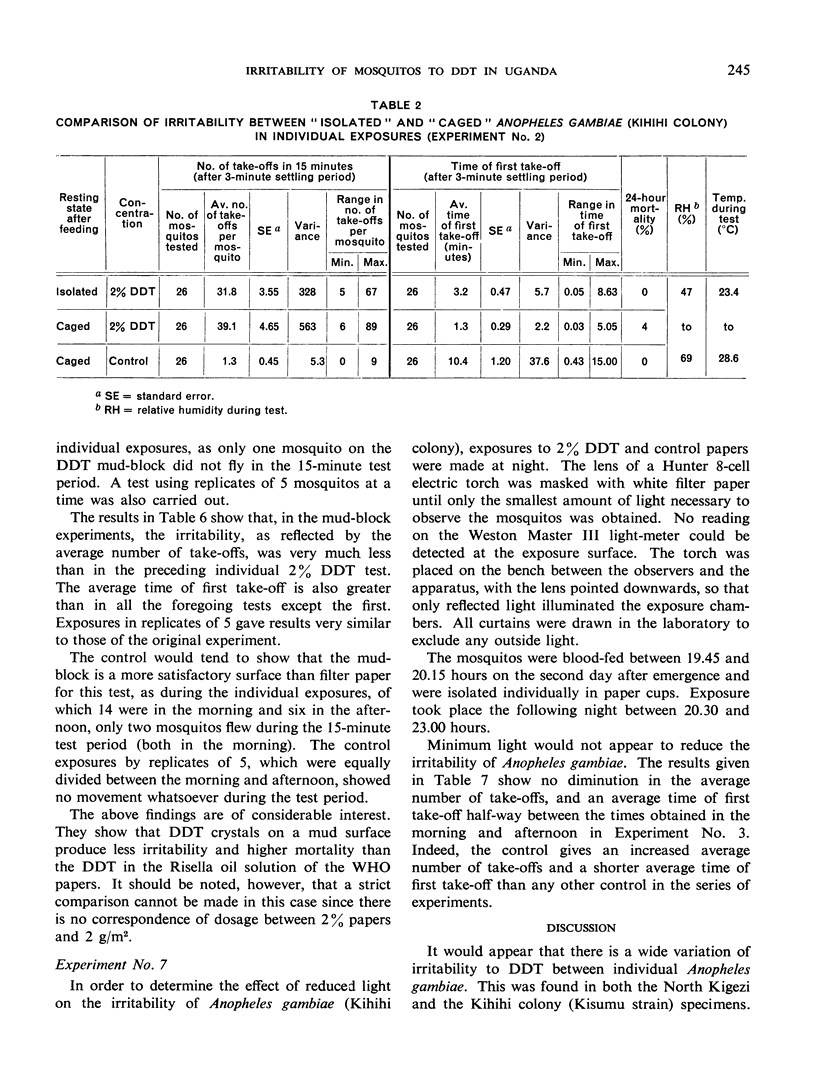

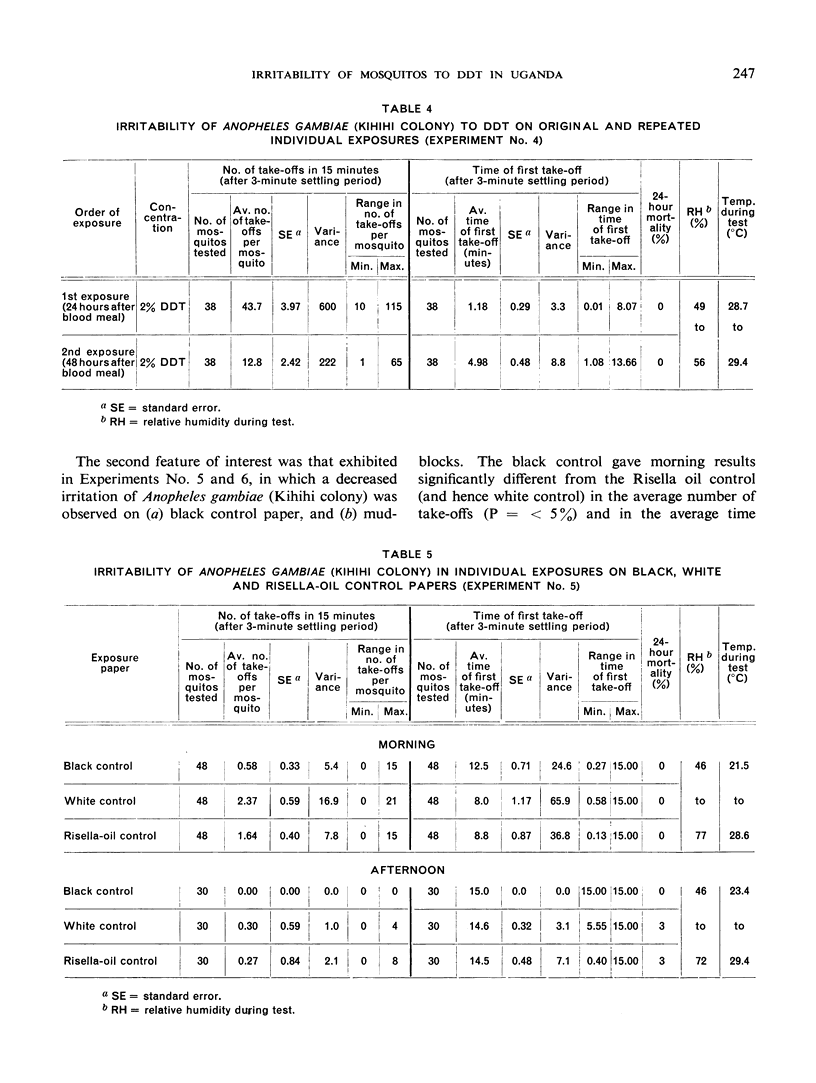

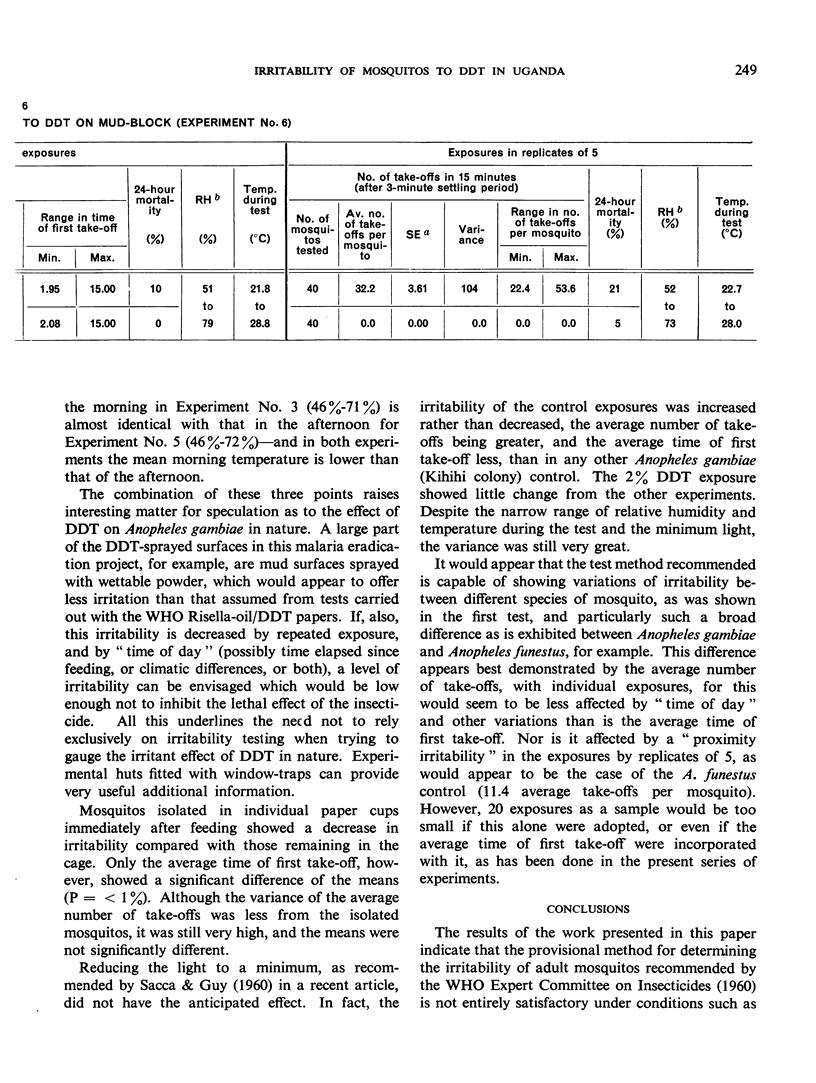
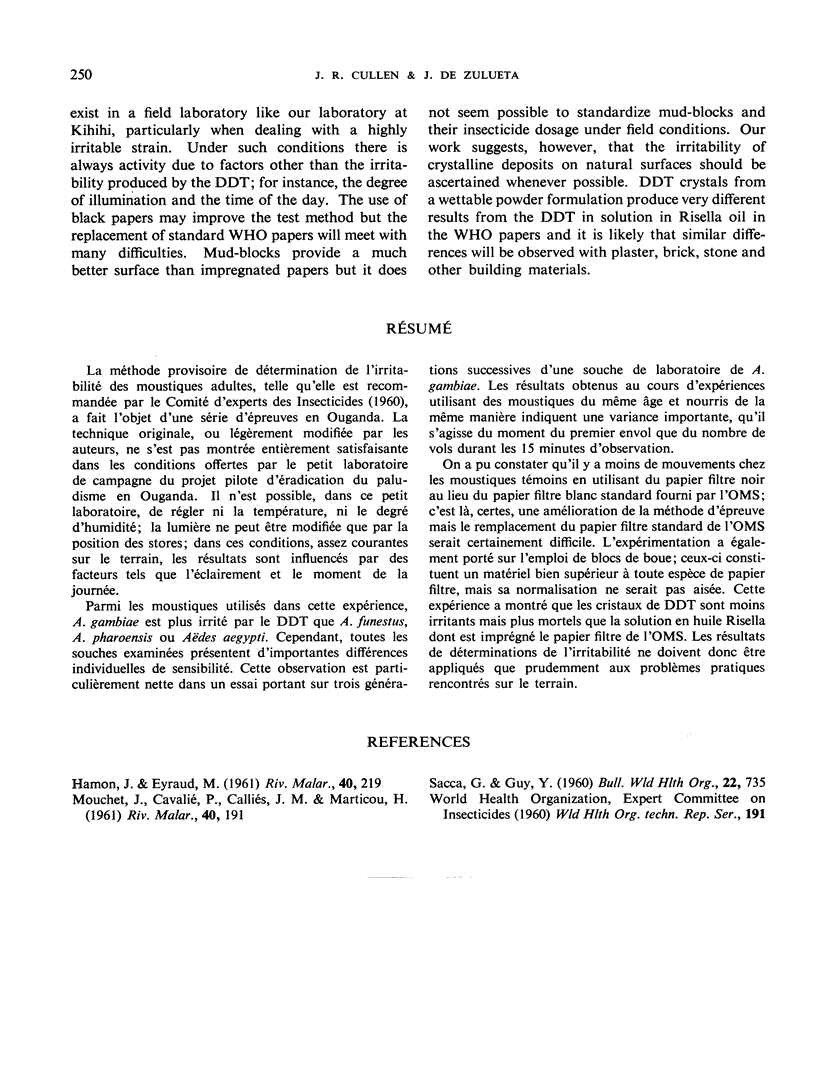
Selected References
These references are in PubMed. This may not be the complete list of references from this article.
- HAMON J., EYRAUD M. [Study of physiological factors conditioning, in Anopheles, irritability to DDT]. Riv Malariol. 1961 Dec;40:219–242. [PubMed] [Google Scholar]
- MOUCHET J., CAVALIE P., CALLIES J. M., MARTICOU H. [Irritability with respect to DDT of Anopheles gambiae and A. funestus in the Northern Cameroons]. Riv Malariol. 1961 Dec;40:191–217. [PubMed] [Google Scholar]
- SACCA G., GUY Y. [Behavioristic resistance to DDT in A. labranchiae in Morocco]. Bull World Health Organ. 1960;22:735–741. [PMC free article] [PubMed] [Google Scholar]


